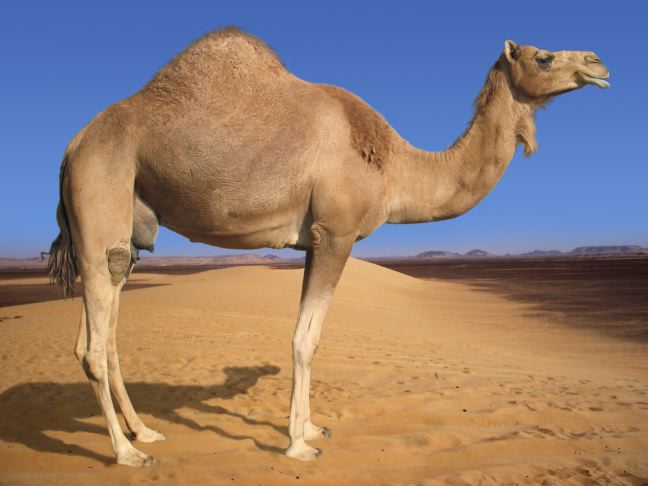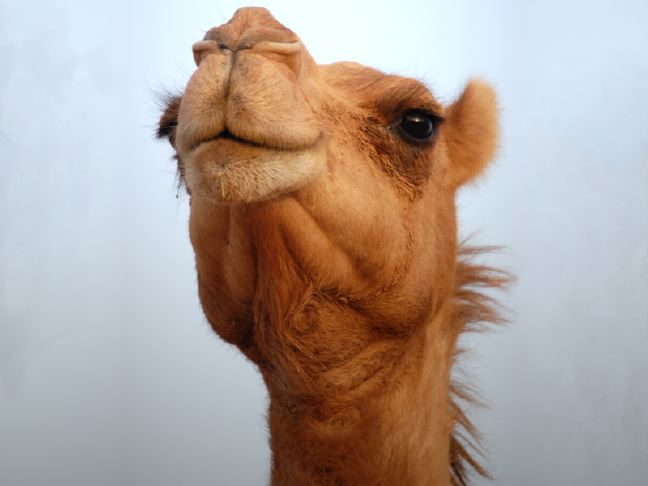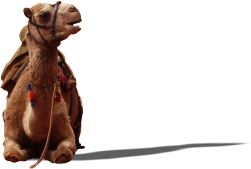|
The Camel
Nature's true nomads.
Camels have lived in some of the most desolate corners of our planet, and not only do they live, they thrive. Most large animals are unable to survive in these kinds of desolate places. This is because of their large requirement for resources such as food and water. Camels are able to use this to their advantage as a survival strategy. By living in deserts, mountains, and other arid places Camels are able to avoid predators, and others who would compete for resources. Camels are only able to do this because of their amazing ability to efficiently use the resources their environments provide. A camel can travel long distances which allow them to take advantage of the maximum number of resources. They can withstand a massive amount of dehydration which allow them to survive not only between watering holes, but sometimes between seasons. When at a watering hole camels are able to gorge themselves and rehydrate quickly. For food, camels are omnivorous. They can eat almost anything be it vegetation, meat, or bone,-- salty or sweet, a camels stomach knows no limits. But it is their temperament that is truly endeared the camel to man. Docile and sweet under a caring hand, but stubborn and angry if ill treated, the camel both wins your heart and your respect.

Sideview of a camel.
Image Sources: Denise Chan
/ License under Creative
Commons 2.0, and Neil Carey
/ License under Creative
Commons 2.0
Available in three desktop sizes:
1280 x 1024 || 1024
x 768 || 800 x 600
Arabian Camels
An overview of camels and man in Arabia.
Perhaps nowhere else on earth is more associated with the camel than the Arabian
Peninsula. Their story is not one of a free population; however, but of a domesticated
animal. Throughout history, Arabian camels have served the needs of humans, and have
benefited from that service as a species. Humans have in fact assured the survival
of camels for thousands of years and quite literally led them to success as a species
that they probably would never have had on their own. The camel has played such an
important role in Arab culture that there are over 160 words for "camel"
in the Arabic language. [1] The geography and climate have combined to define an entire culture with
the camel at its core. This certainly must be seen as high praise of this remarkable
animal.


A camel's face.
Image Source: eNil / License
under Creative Commons 2.0
Available in two desktop sizes:
1024 x 768 || 800
x 600
As early as 1800 BC, trade routes from Asia and Africa crossed the Arabian Peninsula
carrying spices, incense, gold, ivory, and silk on their way to Europe and the lands
of the Fertile Crescent. [2] Camels were used by the Nabateans in the first century BC, on their way
from the Gulf of Aqaba to the trading capital of Petra in central Jordan. [3] Camels
were used by the Bedouin, whose warriors formed the nucleus of the Muslim armies
that conquered the Byzantine and Persian Empires in the 7th century AD. [4] War,
trade, and civilization -- all riding on the back of a hump.
|




